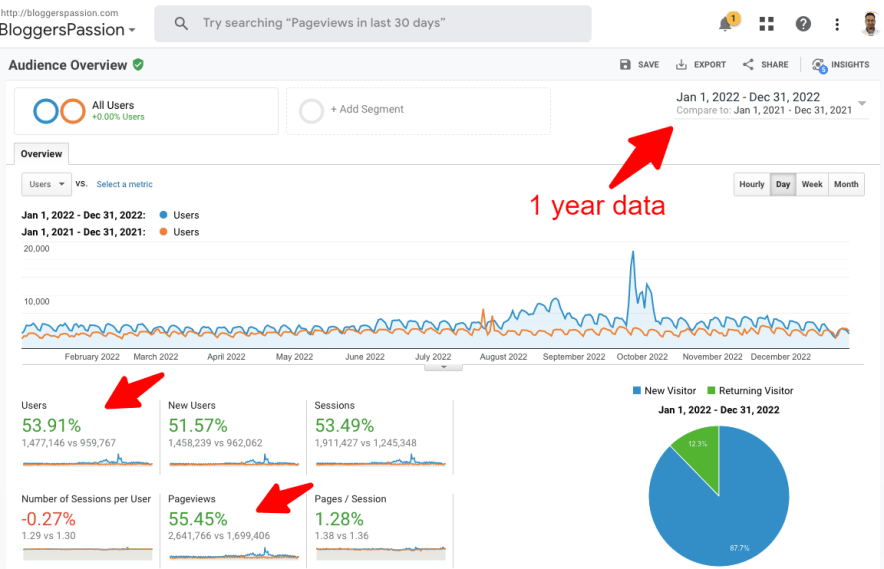Whether you’re striving to enhance your website traffic, elevate conversions, or establish your expertise, long-form content emerges as a powerful tool to achieve these goals. By delving into the realm of long-form content, you embark on a journey of unlocking its potential to captivate your audience, establish authority, and elevate your online presence.
The Essence of Long-Form Content:
Long-form content, as the name suggests, refers to comprehensive and detailed content that delves into a particular topic, providing readers with a thorough understanding and valuable insights. Typically, long-form content encompasses articles exceeding 2,000 words, allowing for in-depth exploration and the inclusion of rich information.
Benefits of Embracing Long-Form Content:
Incorporating long-form content into your content marketing strategy offers a multitude of advantages:
- Enhanced Search Engine Rankings: Search engines favor long-form content due to its ability to provide comprehensive and informative responses to user queries. This preference translates into improved search engine rankings, increasing your website’s visibility and attracting more organic traffic.
- Elevated User Engagement: Long-form content has the power to captivate readers and keep them engaged for extended periods. By offering detailed explanations, actionable insights, and engaging storytelling, you encourage readers to immerse themselves in your content, leading to increased time spent on your website and a lower bounce rate.
- Established Authority and Expertise: Consistently producing high-quality long-form content positions you as a thought leader and a trusted source of information in your industry. Readers perceive you as an expert in your field, enhancing your credibility and reputation.
- Boosted Conversion Rates: Long-form content provides ample opportunity to showcase the value of your products or services and address potential customer concerns. By providing in-depth information and addressing pain points, you can effectively nurture leads and drive higher conversion rates.
Crafting Compelling Long-Form Content:
To create long-form content that resonates with your audience and achieves your desired goals, consider these strategies:
- Identify Your Target Audience: Understand your audience’s interests, needs, and pain points to tailor your content to their specific preferences.
- Choose a Relevant Topic: Select topics that align with your audience’s interests and provide value to their search queries.
- Conduct Thorough Research: Gather credible information and conduct in-depth research to ensure the accuracy and depth of your content.
- Structure Your Content: Organize your content into a clear and logical structure, using headings, subheadings, and bullet points to enhance readability.
- Incorporate Visuals: Enhance your content with relevant and engaging visuals, such as images, infographics, and videos, to break up text and boost engagement.
- Proofread and Edit: Carefully proofread and edit your content to eliminate grammatical errors and ensure a polished presentation.
- Promote Your Content: Share your long-form content across various channels, including social media, email marketing, and relevant online communities.

As you can see above, it’s the best example of a long form article, as it covers many useful things about the product.
1. Choose the RIGHT topic
Don’t choose a random topic for long-form content.
Why? Creating in-depth, long-form articles takes a lot of time, so it’s important to choose a topic that is engaging, informative, and timeless. Only then will the amount of time you spend on a detailed post be worth it in the long run.
So, how do you pick the right topic for long-form content? Here are some tips for choosing a good topic for long-form content.
Define your audience: The topic should start with your ideal readers in mind. Think about your target audience. What are they interested in? What problems do they need help with?
Based on their needs, identify a topic.
You can use several tools for finding such topics;
- Go through Quora (it’s a great platform to find burning questions in your industry)
- Search on Google for the relevant topics
- Browse through relevant forums in your niche
Pick evergreen topics: Choose a topic that is evergreen, which means it is a topic that will be relevant for years to come, not just for a few weeks or months. Evergreen topics are always relevant and are more likely to be shared and linked to.
Here are some examples of evergreen topics for long-form content:
- How-to guides
- Product reviews
- Listicles
- Ultimate guides
- Industry trends
- Tips and tricks
- Case studies
You can analyze your competitor’s websites to see what type of content generates the most traffic. You can use tools like Semrush to identify the high-traffic pages of ANY website easily.
Use keyword tools: Finally, you can use keyword research tools to see how many people are searching for information on your topic. If you’re going for long-form content, it’s better to pick a topic with 1000+ monthly searches.
There are many keyword tools you can use to find content ideas, including;
- Semrush keyword magic
- AlsoAsked.com and Answer The Public (to find question keywords)
- KeywordTool.io
- Ubersuggest
Here are some examples of good topics for long-form content:
- How-to guides
- Ultimate guides
- Listicles
- Case studies
- Interviews
- Personal stories

2. Create a detailed outline
Once you’ve chosen a topic, take some time to brainstorm a list of subtopics (subheadings) that you want to cover in your long-form article.
Outlining your content is EXTREMELY important.
Don’t use a brief outline; instead, create a detailed outline.
Outlining will help you to organize ALL your ideas and subtopics in one place. Also, outlining can help you write detailed blog posts. Here are some tips for outlining your content.
- Think about the MAIN points that you want to include in your article.
- Consider the different aspects of your topic. For example, if you’re writing about how to start a blog, you could cover subtopics like choosing a niche, setting up your blog, installing WordPress, writing your first post, etc.
- Look for related topics that you could cover in your article. For example, if you’re writing about choosing a web host, you could cover subtopics like the different hosting types, comparison of top web hosts, pricing of your recommended web hosting provider, etc.
Once you have a list of subheadings in your outline, you can organize them into a logical structure to make your long-form article even better.
Make sure that your content is well-organized and easy to read. Use clear headings and subheadings to break up your text. Also, use lots of images and illustrations to make your detailed content more engaging.
3. Quality writing is “deep work”
Once you’re done with topic research and outlining your content, it’s time to start writing.
Remember, you need to make your long-form content as USEFUL as possible. You don’t want to write everything just to make your content longer. You need to add ONLY those things that add REAL value.
To write detailed content, you need to be able to focus without distraction and think deeply about the topic. This is where deep work comes in.
The term “deep work” was coined by Cal Newport, which is the ability to focus without distraction on a task that is important.

You can also use the Pomodoro technique to work for 25 minutes, take 5 minutes, and repeat the process until your writing is done. Here are some tips for entering a state of deep work while creating long-form articles;
- Schedule time for writing each day. It can be 30 minutes, 1 hour, or 2+ hours. But create a schedule for writing and stick to it.
- Find a quiet place where you can work without interruption.
- Keep your phone in silent mode and turn off notifications.
- Set a timer for 25 minutes and focus on your task until the timer goes off.
- Take a short break, then repeat the process.
4. Write Freely
Yes, writing longer articles is daunting, as it takes a lot of time.
Here’s what works well: write freely.
Freewriting can help you to develop your writing style and voice.
You don’t have to start with an introduction. Once your outline is done, you can start writing freely on any subtopic you want (that you’re most familiar with).
As you keep writing more words, you’ll get enough momentum to finish the rest of the article. Once you’re done writing, you can start working on the introduction part. That’s exactly how we write our detailed blog posts. We write the intro lines once the post is fully written. It saves a lot of time.
Make sure to start with a strong introduction. Why? Your intro is what will grab the reader’s attention and introduce the topic of your content.
Once you’ve written the body and intro, conclude with a summary of your main points and a call to action.
Here are some quick tips for freewriting:
- Set a timer for 10, 15, or 20 minutes.
- Start writing whatever comes to mind, no matter how silly or irrelevant it may seem
- Don’t worry about grammar or spelling.
- Don’t stop editing or revising your work until you’re done with the writing part.
- Keep doing the same things until you fall in love with freewriting.
The bottom line? Focus on clarity and readability.
5. Go Deeper
Long-form content means comprehensive and in-depth content.
So, what exactly do you need to write such content? DEPTH. You need to cover the topic from A to Z.
Here are some tips on going deeper while writing detailed blog posts.
- Do your research. You need to research more to get to the bottom of your topic. The more you know about your topic, the more depth you can bring to your writing. Research your topic using various sources, including books, articles, and videos.
- Want to add MORE value to the topic? Then, analyze the topic instead of summarizing everything you learned.
- Provide real-world examples. The difference between a good copy and thin content is the ability to use REAL examples. Use specific examples while talking about a subhead or point.
- Try to write research-backed data to make your content more appealing. Use data, statistics, and illustrations to write data-driven content.
6. Edit and proofread your content
The biggest challenge with long-form content is that it’s easy to make many grammatical mistakes.
It’s easier to publish a 300-word blog post without errors than to publish a detailed, 3000-word article.
That’s why make sure to spend extra time proofreading and editing long-form content. If you want to save time, proofread and edit only after you’ve finished writing the entire article. Don’t do it in between, as this can be time-consuming.
Here’s a quick tip for proofreading: read your content aloud from start to finish. That way, you can easily identify your content’s grammatical mistakes or sentence issues.
Here are some additional tips for proofreading and editing long-form content.
- Use a grammar checker tool. A grammar checker like Grammarly can help you identify and correct grammar, spelling, and punctuation errors.
- If you’re a non-native English speaker struggling to proofread and edit your work, ask a friend, family member, or colleague to help you. Or hire an editor who can edit and proofread the content for you. You can find many affordable freelance content editors on platforms like Upwork for $5 to $10!
- Read your detailed content backward (from end to introduction), as it can help you easily find grammar errors that you might miss when reading forward. Or you can read it one sentence at a time.
7. Structure your long-form blog content
Structuring your long-form content is extremely important. If your content flow is bad, the readability becomes a BIG issue.
You need to make your readers spend MORE time reading your content. Here’s where proper structuring comes into play.
Here are some quick tips for structuring your content properly.
- Start with a strong hook: No matter what topic you pick, start with a strong introduction that immediately grabs the reader’s attention. You can begin your introduction with quotes, statistics, or an interesting question.
- Break up your content: You must use many subheadings and headings to break up your longer content into logical sections. Use a table of contents to make it easy for readers to scan and find the information they’re looking for.
- Use images: The best way to break longer content is to use images. Use lots of visuals throughout your content so your readers don’t get bored while reading. Also, images can help you easily demonstrate your points.
Why is long-form blog content important? Benefits
So why do you need to spend so much time creating longer articles? Here are some of the biggest benefits of writing long-form blog content in 2024.
Better search rankings: The #1 reason to create longer content is it helps you rank higher in search engines like Google.
With longer content, you’ll have the opportunity to target more keywords, especially long-tail and semantic keywords. They can help you attract more visitors from Google.
Have a look at our blog’s traffic report (you can find more from our blog income reports case study);

As you can see, over 1.4 million visitors visited our site in the last 1 year, and most of that traffic comes from Google. The reason for our SEO success is long-form content, as we MOSTLY publish 2000+ word blog posts.
Attracts more links: Did you know that long-form content (over 3000 words) gets an average of 77.2% more links than short articles (less than 1000 words)? (Source: Backlinko)

If you want to earn backlinks to your website, go for longer articles, as they work like a charm. Most website owners want to link out to in-depth and informative content over short content.
Higher conversions: The best part about longer articles is that they can help you explain a product, service, or topic in detail. Your website readers can fully understand everything about a topic in one place. It ultimately leads to better user engagement and overall conversions.
In a nutshell, long-form content is what exactly you need if you want to attract more traffic, build authority, generate leads, and boost sales.
FAQs on long form content examples
Here are some frequently asked questions about long-form content.
What is long-form content?
Long-form content is any content that is usually over 2000 words long. This can include blog posts, interviews, eBooks, case studies, and more.
Why is long-form content important?
Long-form content offers a ton of benefits, including;
- Helps you cover the topic in depth
- Helps you establish yourself as an expert in your field
- Longer content works well in Google
What are some examples of long-form content?
Here are some examples of long-form content:
- Detailed blog posts
- Ultimate How-to guides and tutorials
- ebooks
- Case studies
- In-depth interviews
How to rank long-form articles?
Just because you published a detailed article on your blog doesn’t guarantee first-page rankings on Google. You’ll need several things, including;
- Backlinks from other websites
- Proper on-page optimization for your target keywords
- User engagement metrics, such as social shares, comments, etc
What are the best tools for long-form content?
Some of the best tools you can use to create longer content are;
- Semrush (for keyword research and backlink purposes)
- Jasper, ChatGPT (for outlining, writing assistance, etc)
- Grammarly (grammar correction and proofreading)
- Rank Math or Surfer SEO (for content optimization)
Final thoughts on long form articles
If you want to grow and increase the authority of your website you need long-form content.
With the recent introduction of Google algorithms and AI into search engines, longer content is more important than ever. But make every sentence and paragraph count. Write in detail, but avoid unnecessary words. Use only what is necessary. Keep it attractive.
So, what are your thoughts on creating longer articles? Did you find this guide useful? Have more questions? Tell us in the comments.
